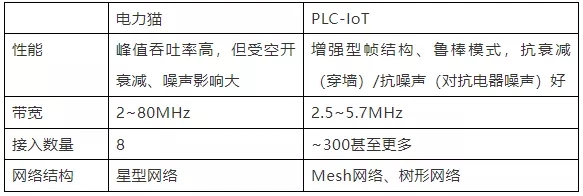The rapid development of the Internet of Things is inseparable from the continuous breakthrough of communication technology. In order to achieve the ultimate goal of the Internet of Everything, people have more and more demands for IoT terminals to collect data, and various IoT access technologies are urgently needed to ensure reliable, safe and efficient communication in the last mile of the IoT.
Why do you need PLC-IoT?
Power Line Communication (PLC for short) can directly reuse power lines without deploying dedicated lines to connect IoT devices. It avoids the problems that wireless communication technology is greatly affected by surrounding environmental factors, such as wall penetration, 2.4G unlicensed frequency band interference, etc.; at the same time, it avoids wiring, which solves the need for separate wiring for industrial fieldbuses, confusion in later wiring, line aging, etc. maintenance difficulties, etc. It also solves the problem that various communication technologies cannot share a network and the additional investment of customers is large. The power grid is the most extensive network in the world, and the area where electricity flows is much wider than the area where people step on. In scenarios where humans cannot reach, data communication can be achieved through power lines, and the Internet of Everything will gradually become a reality.
PLC-IoT is an innovative practice of applying PLC technology in IoT scenarios. Based on HPLC/IEEE 1901.1, it is a mid-band power line carrier communication technology for IoT scenarios, which effectively solves the problems of power line signal interference and attenuation, and supports IP-based communication capabilities. . PLC-IoT can build a high-speed and reliable terminal IoT communication network without additional trenching and burying cables, and directly reuse power lines, which can reduce the cost of communication construction and deployment by more than 50%, and greatly shorten the deployment cycle. It has been widely used in intelligent Home, smart meter reading, smart traffic lights, smart street lights, photovoltaic power generation and other scenarios.

Which PLC standard is more suitable for the Internet of Things?
IEEE PLC standards are divided into three types: 1901, 1901.1 and 1901.2; IEEE 1901 is a broadband home broadband standard, which is applied to power cats; IEEE 1901.1 and 1901.2 are medium and low frequency IoT standards, which are applied to the Internet of Things.

| Parameter standard | IEC61334 FSK | G3 OFDM | PRIME OFDM | 1901.2 OFDM | 1901.1 OFDM |
| physical layer rate | 2.4kbps | 46kbps | 128kbps | 500kbps | >500kbps |
| frequency band | 9~95kHz | 36~91kHz | 42~89kHz | <500kHz | <12MHz |
| Networking cycle 500 nodes | hour level | hour level | hour level | hour level | seconds |
| Application Environment | interference-free environment | interference-free environment | interference-free environment | interference-free environment | complex interference environment |
Comparison of different PLC standards
In short, IEEE 1901.1 has high speed, fast networking, less noise in frequency band selection, and low attenuation, which is suitable for the complex interference environment of the Internet of Things. HiSilicon PLC-IoT is based on the IEEE1901.1 standard and meets the communication requirements of medium and high speed, low latency, and convenient construction, operation and maintenance.
Wired connection technology PK: PLC-IoT wins!


On the whole, the engineering cost of PLC-IoT has great advantages. If there is electricity, there will be a network without additional wiring costs. Compared with the traditional technology, the transmission distance and transmission speed are greatly improved, and the connection capability is simple and powerful.